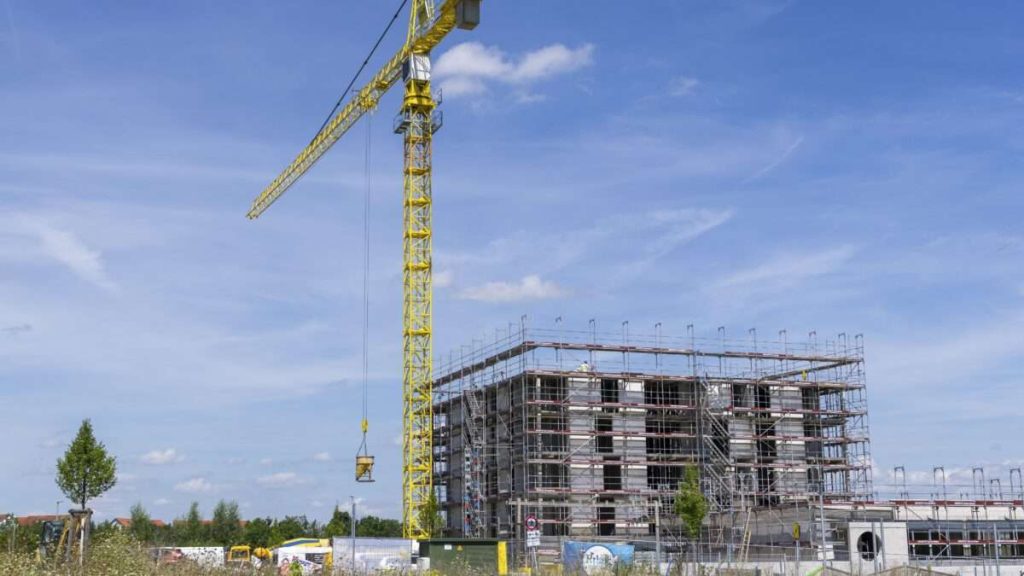Last week’s rate cut by the Federal Reserve, with the likelihood of more to come, has many homeowners, renters, and those who would join their ranks hoping that lower mortgage rates will result, easing the housing crunch. While the rate cut likely will reduce borrowing costs, that will help only the demand side of the equation. Ensuring that enough homes exist to satisfy that demand requires reducing regulatory barriers that make home construction an unnecessarily expensive and drawn-out process.
Not Enough Homes Are Being Built
“While lower mortgage rates are one possibility that could unlock more supply, at the end of the day, the country has a structural housing deficit and needs to continuing building more homes,” Nick Villa noted for Moody’s Analytics last month. A week earlier he’d pointed out, “from 1968 to 2006, single-family completions averaged approximately 1.1 million units over this 39-year period. However, from 2007 to 2023, the average was closer to roughly 765 thousand units.”
Why has the construction of homes slowed in recent years even as the population increased?
Regulations Stand in the Way of New Houses and Apartments
Writing at the end of August, Jeanna Smialek of The New York Times cautioned that experts “warn that long-running market trends — including high labor costs, more expensive materials and regulations that limit the pace and scope of building — will continue to hinder the supply of affordable homes.”
“Rising materials costs, lengthy permitting processes, construction workforce shortages and restrictive zoning regulations are significant cost drivers,” agrees the nonpartisan National Conference of State Legislatures (NCSL).
Building regulations reflect a wide range of government interventions, including zoning restrictions, land use regulations, energy efficiency codes, safety codes, and more. The intent behind such rules often started with public health, then expanded to encompass energy efficiency, home values, and even the aesthetic preferences of government officials. Regulations can affect construction, and require sign-off from local agencies, through the entire process—from planning, to building, to final habitation.
The evidence that regulations play a major role in choking housing availability is very strong, Bryan Caplan, a professor of economics at George Mason University, wrote in July. “Before the rise of stricter regulation in the 1970s, the textbook model worked well: When demand pushed prices above the cost of production, more construction drove prices back down.” Since then, though, red-tape-bound jurisdictions have seen prices soar relative to less heavily regulated places. “Strictly regulated urban areas like New York City and the Bay Area have high prices and low construction, while more lightly regulated areas like Houston and Dallas have much lower prices and much more construction.”
Those rules-driven higher costs can be substantial. Referring to them as “regulatory taxes,” researchers in 2015 concluded that the price of condominiums in Manhattan was hiked by 50 percent, and found “a wide range of ‘regulatory tax’ estimates for single-family markets across the country as of 1999–2000, ranging from zero in Birmingham, Cincinnati, and Houston to nearly 20% of total house value in Boston, over 30% in Los Angeles, and upward of 50% in the San Francisco Bay Area.”
That squares with claims by the National Association of Home Builders (NAHB), a trade association, that “regulations account for nearly 25% of the cost of a single-family home” and “more than 40% of the cost of a typical apartment development.” As of 2021, that added an average of $93,870 to the cost of a new single-family home in the United States, broken down as $41,330 from regulations during development and $52,540 from regulations during construction, according to the NAHB.
A One-Year Wait To See a Bureaucrat
Extensive regulations entail compliance costs, not just in money, but in time. In March, real estate industry publication TheRealDeal reported a developer’s year-long wait to get an appointment with an official who could resolve a conflict between one New York City agency’s requirement for a ramp that complied with the Americans with Disabilities Act, and another agency’s demand for trees in the same space.
“I suspect hundreds if not thousands of apartments sit vacant every year for months on end while landlords go through the nonsense,” another developer told the publication.
That accumulating red tape and bureaucracy impede constructing new housing isn’t controversial. The nonpartisan NCSL takes it as a given; the Republican-dominated House Financial Services Subcommittee on Housing and Insurance held a hearing in July on “one of the biggest drivers of unaffordability—layer upon layer of federal, state, and local bureaucratic rules that do little to improve the quality of housing stock, while also adding new costs and construction delays”; and even the Democratic Biden administration, usually a cheerleader for government intervention, proposes accelerating historic preservation reviews for federal housing projects, easing federal rules about manufactured homes, and encouraging state and local governments to expedite housing permitting.
Glimmers of Deregulatory Hope
States and localities are starting to see the light. Minneapolis dumped single-family zoning in 2019, and Grand Rapids eased lot-size requirements and simplified the construction of higher-density housing, among other changes. The state of Hawaii is also allowing more housing units per lot, and Montana last year passed multiple bills overriding local rules that stand in the way of residents right to build on their own property.
Yet officials in too many places consider making it difficult to build homes a feature, not a bug. A lot more work remains to be done, and doing it requires buy-in from existing residents who sometimes seem eager to freeze their communities in time as museums to the year they moved into their existing houses and apartments, and from lawmakers resistant to admitting that the webs of red tape they’ve created are problems, not solutions. Making housing available and affordable depends on getting a good many people out of the way.
“Given housing deregulation’s many demonstrated benefits, this policy agenda deserves bipartisan support,” Caplan, the economist, continued in his July column. “Democrats should cheer the effects on equality, social mobility and the environment. Republicans should be delighted to see free markets spreading broad prosperity, creating new working-class opportunities and fostering family formation.”
Clearing away barriers to housing shouldn’t be a big ask. We’ll see if Americans are up to the challenge.
The post Deregulation Can Fix the Housing Crunch appeared first on Reason.com.







